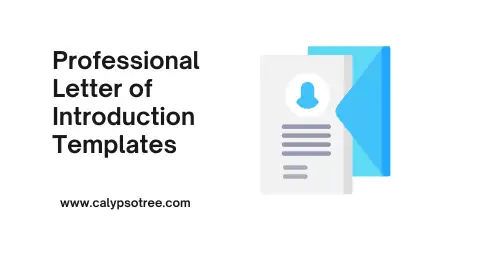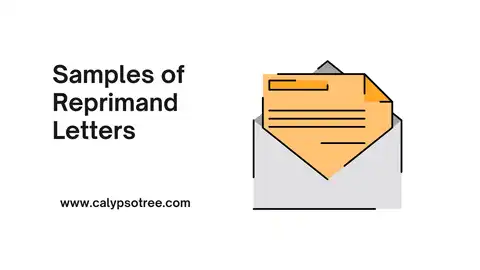Imagine starting a new job. You’re excited, maybe a bit nervous, and eager to make a good impression. Now imagine receiving a warm, personalized “sample welcome letters for new employees” from your new company. It instantly eases your nerves and makes you feel valued.
That’s the power of a well-written welcome letter! It sets the stage for a positive onboarding experience, boosting new employee satisfaction and increasing their chances of becoming a long-term, dedicated member of your team.
Key Elements of Welcome Letter

Here’s a breakdown of the core components and how to make them impactful:
Warmth and Enthusiasm:
- Avoid generic phrases: Ditch the “We’re pleased to have you…” for something more authentic.
- Example: “Your background in [skill] really impressed us, and we can’t wait to see what you’ll bring to the team!”
- Express confidence: Show your belief in the new hire’s potential to succeed in their role.
Essential Information:
- Clarity is key: Use simple formatting (bullet points, clear headings) to avoid information overload.
- First-day checklist: Include specifics on start time, dress code, parking, documents, and anyone they should report to.
- Orientation overview: Provide a basic outline of what to expect on their first day or week if an orientation schedule is available.
Company Culture:
- Share your values: Don’t just list them; offer a brief example of how a company value is put into action. (E.g., “We’re big on collaboration, so you’ll find there’s always someone ready to help brainstorm a solution.”)
- Casual or formal? The language you use gives a sense of the workplace vibe. A playful, conversational tone indicates a more relaxed atmosphere.
Reassurance and Support:
- Anticipate anxieties: “Your first days will be about learning the ropes – we don’t expect you to know everything right away.”
- Name helpful contacts: “If you have any questions, reach out to [name], your onboarding buddy, or [manager name].”
- Encouraging words: “We’re confident you’ll be a fantastic addition to our team!”
Additional Considerations
- Personalization: Did the interview process reveal a specific passion or skill of the new hire? Reference their interest to show you were paying attention.
- Company Size: In smaller companies, a welcome from the CEO or founder adds a personal touch.
- Proofreading: Even a short letter deserves careful editing. Typos and errors create a less-than-stellar first impression.
Welcome Letter Variations
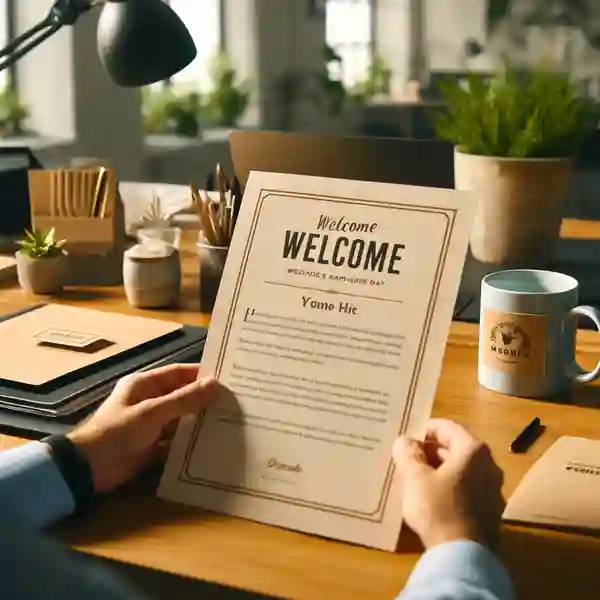
Not all new employee welcome letters are the same! Here’s how to make your letter the best fit:
Formal vs. Informal
- Company Size: Larger companies usually have a more serious style in their letters. Startups and smaller teams might feel more like a group of friends.
- Industry: Banks and law offices like to sound formal. Tech companies or creative jobs can be more relaxed.
- Position: You might use slightly more formal language for a company boss than for a new team member. But everyone likes to feel welcomed!
Role-Specific
- Departmental Insights: If they’re joining the marketing team, mention a cool project they’ll work on. Tech people might like to hear about new software.
- It Takes a Village: Tell them a little about other teams they’ll work with, so they can start building connections.
- Skill-Specific Acknowledgement! Remind them why their skills are perfect for this job. It makes them feel confident.
From the Manager vs. the Team
Manager’s Welcome: This focuses on:
- Expressing excitement about the new employee joining their specific team.
- Outlining key responsibilities and how they fit into the team’s goals.
- Offering a direct point of contact for questions and support.
Team Welcome: This conveys:
- A collective greeting from the people they’ll be working with daily.
- A friendly, informal tone that promotes a sense of camaraderie.
- A hint at the team’s dynamic or shared interests (ex: “We’re coffee enthusiasts and always up for a lunchtime run!”)
Ideally, the new employee would receive welcomes from both their manager and team. This creates a multi-pronged sense of belonging and support, easing their transition into the new role.
Best Practices for Delivery and Distribution

Timing:
- Job Offer Accepted? Go! Don’t wait too long after someone says “Yes!” to the job. You want to keep their excitement high.
- Not Too Early: Sending the letter months before they start feels less special. Aim for about a week or two before their first day.
Delivery Methods:
- Email Rules: This is the easiest and fastest way for most companies.
- Old-School Charm: Sometimes, a printed letter feels extra special. This can be nice for higher-level positions.
- Welcome Basket: If you’re putting together new-hire goodies (company mug, notebook, etc.), the welcome letter is the perfect thing to include on top!
Who Hits Send?
- HR Power: HR often handles the first communication, especially in big companies.
- The Boss’s Touch: A direct welcome from the new employee’s manager shows they care.
- Small Business Style: If the company is small, the owner or CEO sending the welcome makes it feel personal.
Extra Tip: No matter how you send it, make sure the letter looks nice and doesn’t have mistakes. This is part of your company’s first impression!
Sample Welcome Letters for New Employees Templates and Examples
Best Welcome Letter to New Employee
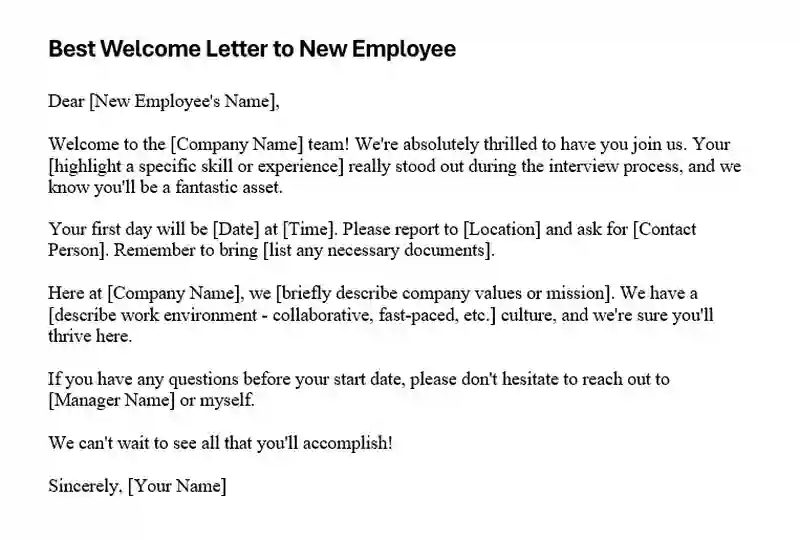
This template strikes a balance between professionalism and genuine enthusiasm:
Dear [New Employee’s Name],
Welcome to the [Company Name] team! We’re absolutely thrilled to have you join us. Your [highlight a specific skill or experience] really stood out during the interview process, and we know you’ll be a fantastic asset.
Your first day will be [Date] at [Time]. Please report to [Location] and ask for [Contact Person]. Remember to bring [list any necessary documents].
Here at [Company Name], we [briefly describe company values or mission]. We have a [describe work environment – collaborative, fast-paced, etc.] culture, and we’re sure you’ll thrive here.
If you have any questions before your start date, please don’t hesitate to reach out to [Manager Name] or myself.
We can’t wait to see all that you’ll accomplish!
Sincerely, [Your Name]
Fun Welcome Letter to New Employee
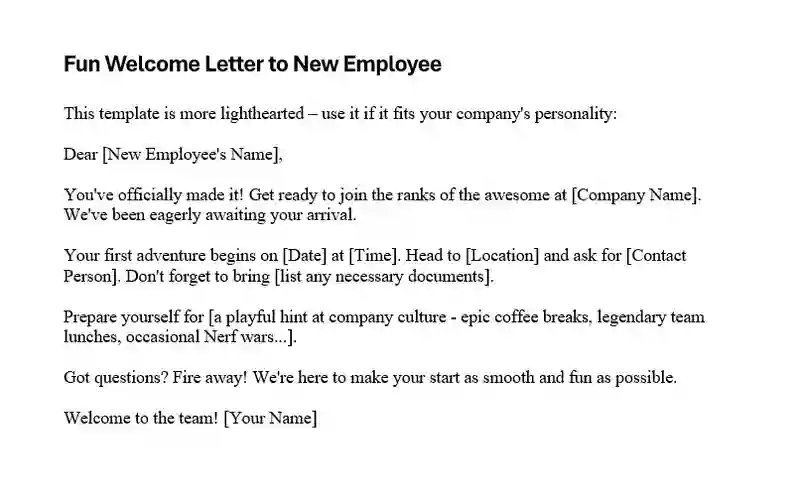
This template is more lighthearted – use it if it fits your company’s personality:
Dear [New Employee’s Name],
You’ve officially made it! Get ready to join the ranks of the awesome at [Company Name]. We’ve been eagerly awaiting your arrival.
Your first adventure begins on [Date] at [Time]. Head to [Location] and ask for [Contact Person]. Don’t forget to bring [list any necessary documents].
Prepare yourself for [a playful hint at company culture – epic coffee breaks, legendary team lunches, occasional Nerf wars…].
Got questions? Fire away! We’re here to make your start as smooth and fun as possible.
Welcome to the team! [Your Name]
The Standard Welcome Sample Welcome Letter for New Employee
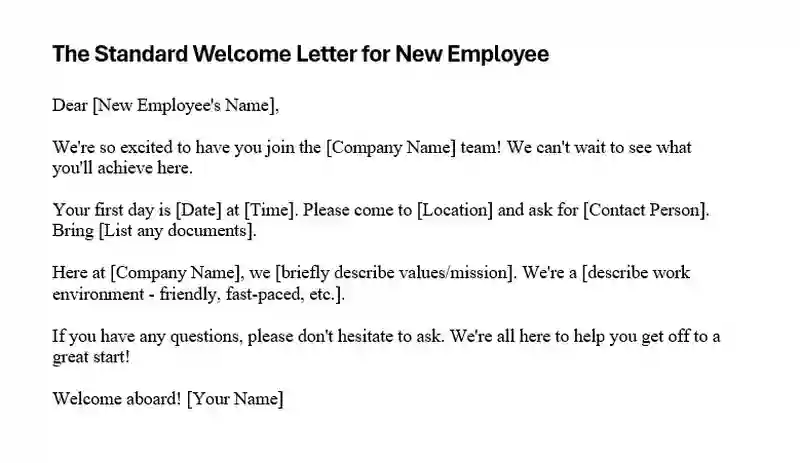
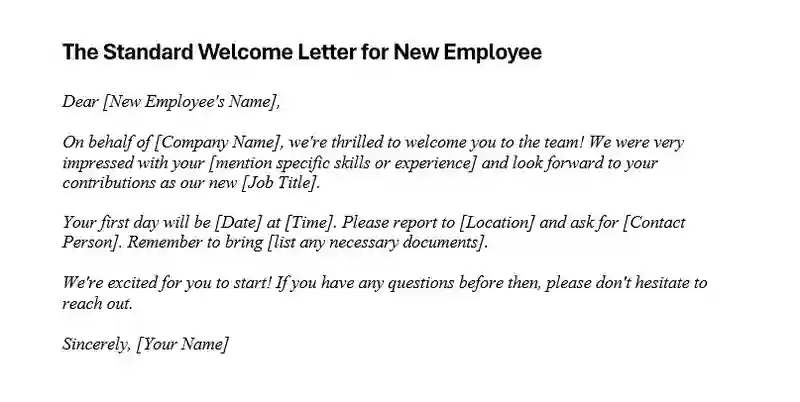
Company Culture Spotlight Sample Welcome Letter for New Employee
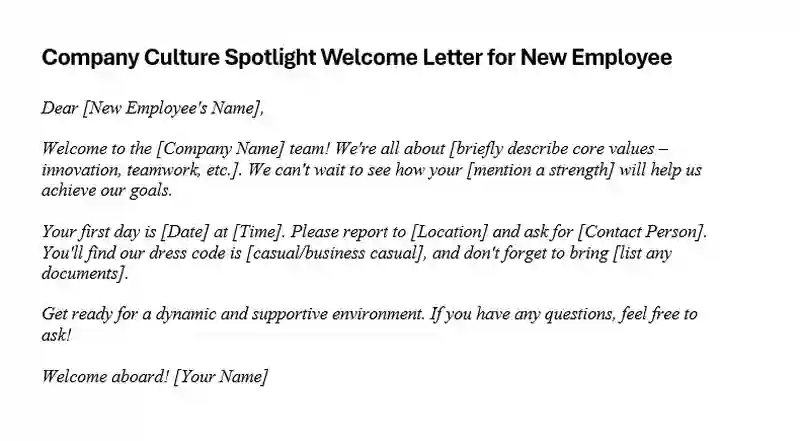
Informal and Friendly Sample Welcome Letter for New Employee
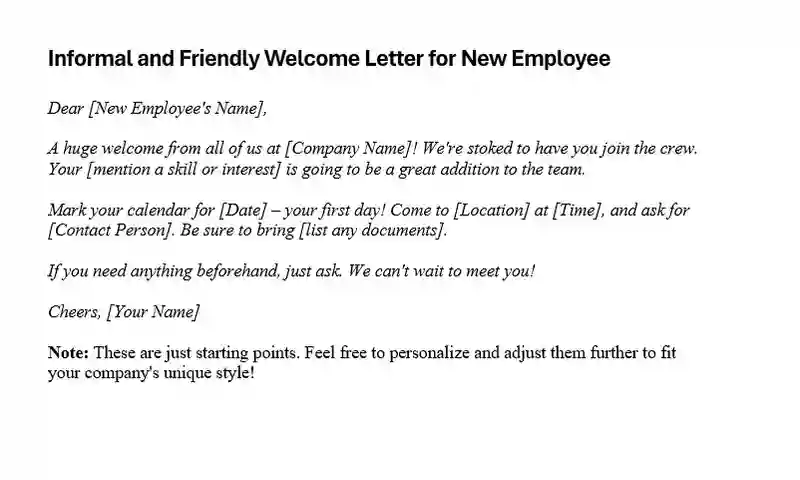
Welcome Letter for New Clients
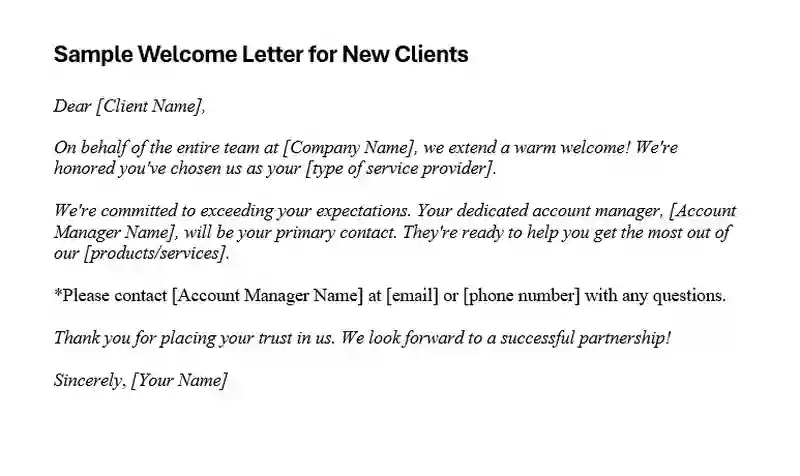
Welcome Letters for New Employees from HR
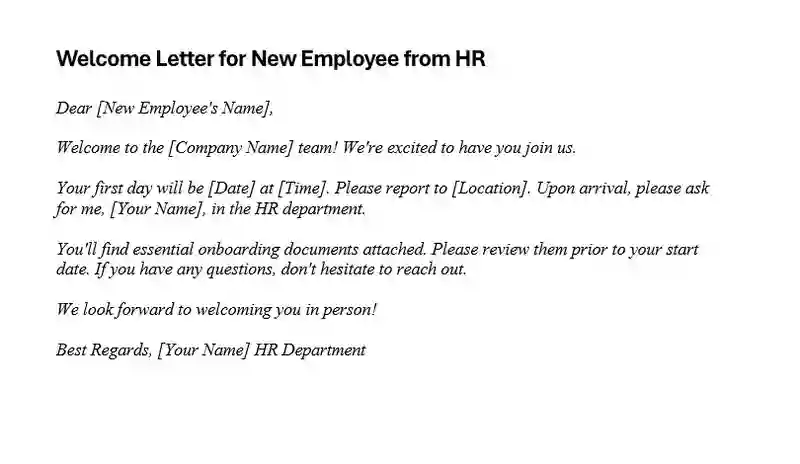
Welcome Letters to New Employees from CEO
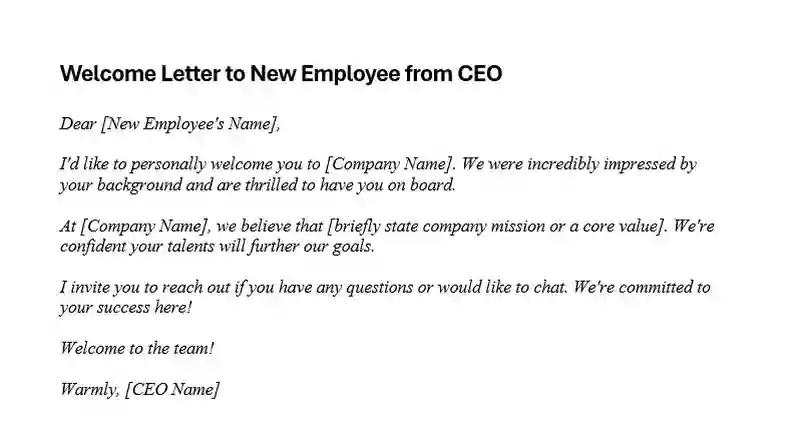
Why Sending Welcome Letters for New Employees
Here’s why welcome letters are awesome for new employees:
- Get Pumped! A good welcome letter shows you’re excited to have them on the team. This boosts their confidence and makes them eager to start.
- It’s All About the Feels: It’s not just a piece of paper; it shows you care about them as a person, not just a worker.
- First Impressions Matter: That first day can be stressful. A welcome letter makes it easier and shows your company in a good light.
- Smooth Sailing: Knowing what to expect (start time, dress code, etc.) helps their first day go smoothly, so they can focus on learning their new job.
- Company Pride: Did you know welcome letters make your company look awesome? It shows new hires that you value your people.
- Sticking Around: People who feel welcomed are way more likely to stay with the company long-term.
- Chill Out, We Got This: A welcome letter can outline what they’ll be doing, which takes away some of that new-job stress.
- You’re Part of the Crew: Feeling welcomed helps them bond with the team faster.
How to Welcome a New Employee to the Team
Starting a new job can be exciting, but also a little nerve-wracking. A warm welcome can chase away those first-day jitters! Here’s how to make your new hire feel awesome about joining your team:
Before They Even Arrive
- The Super-Friendly Welcome Letter: Go beyond start dates and dress codes! Tell them why you loved their skills or something cool they said in the interview.
- Set the Stage: Get their workspace ready. A small welcome gift (a company mug, a notebook) is a nice touch.
- Spread the Word: Tell your team about their new coworker. Mention when they start and a little bit about their background to get everyone excited.
The Big First Day
- Greet Them with a Smile: You (or their manager) and a few teammates should be there to say hello. Be enthusiastic!
- The Grand Tour: Show them around – their desk, breakroom, how to use the fancy coffee machine, all the essentials.
- Meet the Crew: Introductions can be overwhelming, so make it fun! Have everyone share their name, job title, and a random fact, like their favorite snack.
- Lunch Break: Take your new teammate out or have a team lunch. It’s a chance to chat in a more relaxed way.
The First Few Weeks: Keep the Welcome Going!
- Buddy Up: Give them a go-to person for all those little questions. Pick a friendly coworker who knows the ins and outs.
- Checking In: Their manager should have regular meetings to see how they’re doing.
- Learning at Their Pace: Don’t overload them with info. Have a plan, but space out their training.
- Team Time: Keep inviting them to things – after-work get-togethers, team lunches, anything to help them feel included.
Welcome Letter Fails (And How to Fix Them!)
Even with the best intentions, it’s easy to slip up when writing welcome letters. Here’s what NOT to do and how to make your letter shine:
Mistake #1:
Too Much Info It’s tempting to cram everything into the letter, but a giant wall of text is overwhelming.
The Fix: Keep it short and sweet. Basics like start date, dress code, and who to contact are essential. Save the rest for onboarding.
Mistake #2:
Super Formal = Super Boring Nobody wants to read a letter that sounds like a robot wrote it.
The Fix: Be friendly and enthusiastic! Let your company’s personality shine through (if it’s a fun place to work, say so!).
Mistake #3:
Forgetting the Human Touch Everyone uses templates, but they can feel impersonal.
The Fix: Mention something specific from their interview – a skill you admired or an interest they shared. This shows you were paying attention!
Mistake #4:
No Proofreading Typos and errors make your company look sloppy. Ouch!
The Fix: Proofread carefully, or even better, ask a coworker to give it a quick read. A fresh pair of eyes catches what you might miss.
Conclusion
Sample welcome letters for new employees might seem like a small gesture, but its impact is significant. By taking the time to welcome a new employee thoughtfully, you show that you’re invested in their success from the very beginning.
This fosters a strong sense of belonging and encourages them to put their best foot forward. So, don’t underestimate the power of those first words of welcome – they lay the foundation for a positive and productive employee-company relationship.

The content creator team at calipsotree.com is dedicated to making topics accessible to everyone, with over 9 years of experience in writing and breaking down complex concepts into easy-to-understand articles that answer readers’ financial questions.






